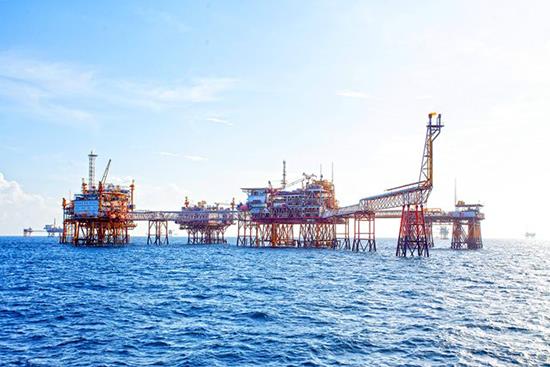Viet Nam’s petroleum industry needs to overcome four big challenges to maintain its position as a leading economic sector.

Viet Nam’s petroleum industry needs to overcome four big challenges to maintain its position as a leading economic sector.
Industry experts have pointed out oil and gas sector obstacles, including rapid depletion of some oil fields; fierce competition in both international and domestic markets; geopolitical instability, especially territorial disputes in the East Sea; and internal problems of the petroleum industry.
Among these challenges, the rapid exhaustion of its main oil discoveries is putting the industry under great pressure.
With the oil reserve volume of 4.4 billion barrels, Viet Nam’s reserves rank third in Asia and 28th in the world. However, extensive exploitation in some fields has accelerated depletion. In addition, the increase in reserves, which is predicted to be low from now to 2025, will likely decrease oil production by 10 per cent - equivalent to more than two million tonnes each year.
According to Nguyen Vu Truong Son, a member of PetroVietnam’s board, if the imbalance between exploration and production increases, the production output will decrease by two thirds.
The current big obstacles for the searching, exploration and exploitation of PetroVietnam are the lack of capital and incomplete mechanism and policies which impede its investment and fail to attract foreign investment, Son told a recent meeting on oil and gas industry.
PetroVietnam estimates the total production for 2018 to reach 14 million tonnes, exceeding its yearly target of 13.23 million tonnes. However, this number is still lower than 2017’s output of 15.52 million tonnes.
Petroleum is a special and priority economic sector to the nation’s economic development as well as energy security.
Since the first flow of crude oil was exploited in June 1986, the industry growth has promoted the whole national economic development, spilling over into the expansion of other essential economic sectors.
The industry has contributed 9-11 per cent of the total State budget and 10-12 per cent of Viet Nam’s gross domestic product (GDP) annually.
However, the situation has changed rapidly both in the country and the rest of the world. Besides fiercer competition, global oil prices have dropped sharply, making the world oil and gas industry struggle, including Viet Nam. Many exploration and exploitation projects have to be postponed.
This demands the industry to have a comprehensive development plan to maintain its growth and contribution to the State.
New direction
According to economist Tran Van, a member of the National Assembly (NA) Committee for Finance and Budget, the oil and gas industry needs to have a specific policy and mechanism which should concentrate resources to form and develop a number of strong industries being capable of competing internationally.
Some Vietnamese oil and gas companies have won bidding in world projects but sometimes they have to “succumb” at home because of some outdated regulations, Van wrote on pvn.vn while noting the institutional improvement for the petroleum industry was being carried out slowly.
In addition, policies and tools to protect the domestic industry in the context of extensive globalisation were not thoroughly studied and introduced, he said.
Nguyen Duc Kien, deputy chairman of the NA Economic Committee, said PetroVietnam must also innovate its corporate management to adapt to the rapid development in the world.
On the Government’s side, he said the NA Economic Committee would propose the Petroleum Law revision to the 14th NA for consideration during the 2019-20 period. — VNS





